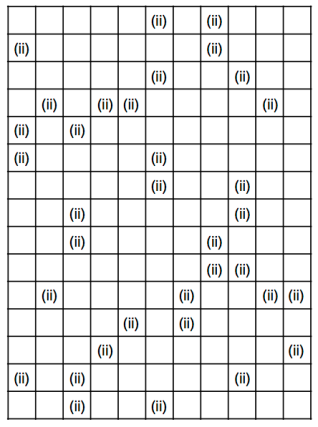A few days before Christmas, two of the nuns from the abbey set off, with a cart full of food, to visit the 10 villages in their valley. The cart contained 12 boxes of apples, 19 boxes of beetroot, 15 boxes of carrots, 21 boxes of jars of damson jam, 20 boxes of bottles of elderberry wine and 23 boxes of fennel. The purpose of the visits was to allow the villagers to obtain supplies of those foods where their own harvests had failed.
At the first village the villagers wished to exchange at the following rate:
They would give 3 boxes of apples and 3 boxes of beetroot in exchange for 1 box of carrots and 13 boxes of fennel.
Similarly, at the other villages there were the following exchange rates:
The villagers would give these boxes (A), in exchange for these boxes (B).
(A) → (B)
(6 carrots, 22 fennel) → (3 apples, 3 elderberry)
(4 beetroot, 7 damson, 11 elderberry) → (10 carrots)
(7 apples, 5 carrots) → (4 damson, 15 fennel)
(8 apples, 1 damson, 14 elderberry) → (2 beetroot)
(21 elderberry, 2 fennel) → (3 beetroot, 4 damson)
(1 damson) → (5 apples, 1 beetroot, 23 elderberry)
(1 apple, 4 carrots) → (2 damson, 3 elderberry)
(2 beetroot, 1 elderberry) → (4 apples, 2 carrots)
(7 beetroot, 5 carrots) → (10 elderberry, 1 fennel)
In each village the villagers would say how many of their exchanges they wanted to make: for example, the first village exchange would be 3 apples and 3 beetroot for 1 carrot and 13 fennel, or 6 apples and 6 beetroot for 2 carrots and 26 fennel, or 9 apples and 9 beetroot for 3 carrots and 39 fennel, or …
It was Christmas Eve when the two nuns ended their journey. As they rode up the road towards the abbey, the younger remarked that in their final load the number of boxes of each food was a multiple of the number of boxes of apples. For example, there were 6 times as many boxes of beetroot as boxes of apples. Similarly there were twice as many boxes of carrots, 5 times as many boxes of damson jam, 3 times as many boxes of elderberry wine and 4 times as many boxes of fennel as there were boxes of apples.
The younger nun continued, “Have we been doing our work under market forces?”. The older nun smiled and, as the sound of carols from the abbey reached them, replied, “Under that greater force which makes us work to meet the needs of others”.
How many boxes of apples were there in the final load?












Recent Comments